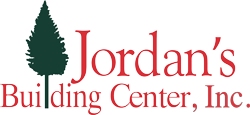
We’re currently in the midst of winter, and for many households in the Denver area, gaps and flaws in your home’s insulation are more noticeable now than ever. Draftiness, higher energy bills and fluctuating temperatures throughout the day are all telltale signs that your home’s insulation or weatherization may not be adequate for the extreme low temps we’ve experienced this season. If this all sounds a lot like what’s happening in your home, here are some tips to better weatherize and insulation your home in 2023.
Seal Air Leaks
One of the most significant sources of heat loss in your home is through air leaks. To prevent heat from escaping, you need to find and seal air leaks in your home. Look for leaks around windows, doors, electrical outlets, and baseboards. Windows, especially, are one of the biggest and most drastic sources of heat loss in Colorado homes — Sill Sealer may be just what you need to seal off your windows from the elements and create a warmer home! Ask about it at Jordan’s Building Center.
Insulate Your Attic
The attic is one of the most critical areas to insulate in your home. It’s estimated that up to 25% of heat loss occurs in the attic. To prevent heat loss, you need to insulate your attic with the right type of insulation. A good starting point is to have at least 12 inches of insulation in your attic. For insulation for your walls, Jordan’s supplies Knauf fiberglass insulation for interior walls and ROCKWOOL insulation for your exterior walls.
Install Insulated Doors
Another way to prevent heat loss in your home is to install insulated doors. Insulated doors are made with a layer of insulation that helps to prevent heat from escaping. Look for doors that are energy efficient and have a high R-value, which measures the door’s ability to resist heat flow.
Better Insulate Your Walls
Insulating your walls is another effective way to prevent heat loss in your home. There are several options for wall insulation, including spray foam, blown-in insulation, and fiberglass. Consider hiring a professional to assess your home and recommend the best type of insulation for your walls, and look to Jordan’s for a trusted insulation supplier.
Install Energy-Efficient Windows
Windows are another major source of heat loss in your home. To prevent heat loss, you need to install energy-efficient windows. Look for windows that have a low U-value, which measures the rate of heat transfer through a window. The lower the U-value, the more energy-efficient the window.

